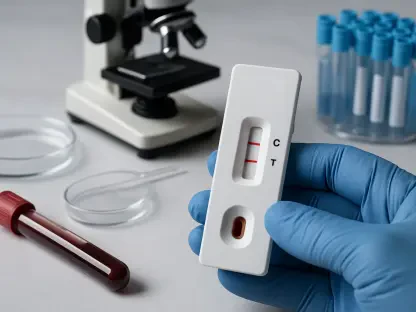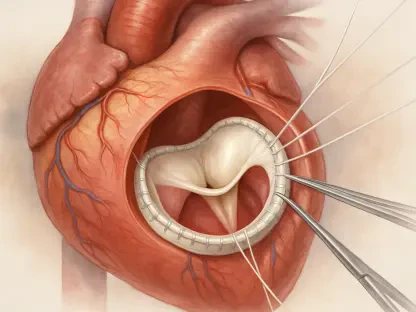In a medical controversy that has gripped public attention, the recent MRI scan of former President Donald Trump at Walter Reed Medical Center has ignited intense discussion about transparency and the state of his health, raising critical questions about the credibility of official information. Conducted on October 10, this procedure was initially described by the White House as part of a routine physical examination. Yet, conflicting statements from Trump himself, alongside sharp critiques from medical experts, have cast doubt on the official narrative. Trump’s claim of having “no idea” which body part was scanned, paired with visible physical concerns like swollen ankles and hand bruises, has fueled skepticism. This situation raises critical questions about the credibility of information provided by official sources and whether there are undisclosed health issues at play. As speculation grows, the debate underscores a broader tension between public curiosity and the guarded nature of high-profile medical disclosures.
Unpacking the Official Narrative
Discrepancies in Public Statements
The White House has maintained that the MRI scan conducted on Donald Trump was a standard component of a preventive health assessment, with Press Secretary Karoline Leavitt emphasizing his “exceptional physical health.” Dr. Sean Barbabella, the White House physician, echoed this sentiment, describing the procedure as routine and inclusive of advanced imaging for comprehensive evaluation. However, Trump’s own remarks to reporters have muddled this message. While asserting that the results were “perfect” and among the best for his age, his admission of not knowing which part of his body was scanned has raised eyebrows. This contradiction between official reassurances and personal confusion has led many to question the transparency of the information being shared. Public observations of physical signs, such as swelling and bruising, further complicate the narrative, as these issues have been largely dismissed or ignored in official communications, leaving room for doubt about the full picture of Trump’s condition.
Challenges to Credibility
Adding to the uncertainty, medical experts have pointed out the implausibility of Trump’s claim regarding his lack of awareness during the MRI. Dr. Vin Gupta, a respected medical analyst, has publicly challenged this assertion, noting that the process of undergoing an MRI is unmistakable due to the confined space of the scanner and the distinct, loud sounds of the magnets at work. Speaking on a widely followed podcast, Gupta argued that it is nearly impossible for a patient to be unaware of which body part is being examined during such a procedure. This perspective aligns with a broader consensus among healthcare professionals who view Trump’s statement as lacking credibility. The skepticism extends beyond mere disbelief, hinting at the possibility of deliberate obfuscation or a reluctance to disclose specific health concerns. As a result, the gap between official statements and expert opinions continues to widen, intensifying public curiosity about what might be concealed beneath the surface of these explanations.
Exploring Medical Expert Critiques
Questioning the Routine Use of MRI Scans
A significant point of contention among medical professionals is the characterization of an MRI as a routine part of a physical exam. Dr. Vin Gupta has been vocal in debunking this claim, explaining that MRIs are not standard screening tools due to their high likelihood of producing false positives, which can lead to unnecessary follow-up tests and patient anxiety. Unlike general blood work or physical assessments, MRIs are typically ordered only when a specific symptom or concern necessitates detailed imaging. Gupta described the White House’s justification as “utter nonsense,” a sentiment shared by many in the medical community who argue that such scans are targeted rather than preventive. This critique raises serious doubts about the official explanation provided for Trump’s MRI, suggesting that there may be an underlying issue prompting the procedure. The discrepancy between medical norms and the narrative presented by Trump’s team has only deepened the mystery surrounding the true purpose of the scan.
Speculation on Cognitive Health Concerns
Perhaps the most unsettling theory to emerge from this controversy is Dr. Gupta’s speculation that the MRI may have been conducted to investigate potential cognitive dysfunction. He posits that if Trump’s medical team had concerns about neurological symptoms or behaviors—whether observed privately or inferred from public appearances—periodic MRIs could be a logical diagnostic step to assess brain health. This hypothesis, while unconfirmed, introduces a grave possibility that starkly contrasts with the White House’s portrayal of Trump as being in peak physical condition. The idea that cognitive issues might be at play adds a layer of complexity to the public discourse, especially given the absence of detailed information about the scan’s focus. Such speculation, grounded in medical reasoning, has sparked significant debate among observers and experts alike, highlighting the urgent need for greater transparency to either confirm or dispel these concerns about Trump’s overall well-being.
Reflecting on Broader Implications
Patterns of Distrust in Health Disclosures
Looking back, the controversy surrounding Donald Trump’s MRI scan revealed a recurring pattern of skepticism toward health-related disclosures from his administration. Historical claims from a former White House doctor suggesting that critical information was being withheld only amplified the distrust that permeated public perception. This sentiment was compounded by visible physical indicators of potential health issues, which were often downplayed or ignored in official statements. The lack of specificity about the purpose of the MRI, combined with Trump’s puzzling remarks, mirrored past instances where clarity was sacrificed for ambiguity. This persistent vagueness fostered an environment where speculation thrived, as the public and media grappled with incomplete narratives. The tension between official accounts and external critiques underscored a fundamental challenge in balancing privacy with the public’s right to know about the health of a prominent figure.
Moving Toward Greater Transparency
Reflecting on the events, the debate over Trump’s MRI emphasized the critical need for actionable steps to bridge the gap between official narratives and public trust. One potential solution lies in establishing clearer protocols for disclosing medical information about public figures, ensuring that basic details—such as the purpose of specific tests—are shared without compromising personal privacy. Additionally, independent medical panels could be tasked with verifying or contextualizing official health reports to lend credibility to such announcements. Encouraging a culture of openness, even in a limited capacity, could help mitigate the speculation that arises from ambiguity. As future health disclosures unfold, stakeholders might consider these mechanisms to foster informed dialogue and reduce the skepticism that dominated this particular controversy. Addressing these issues head-on offers a path to rebuilding confidence in the information shared about high-profile individuals.









